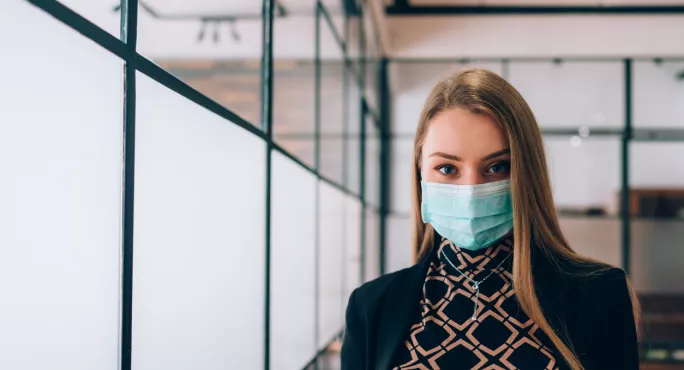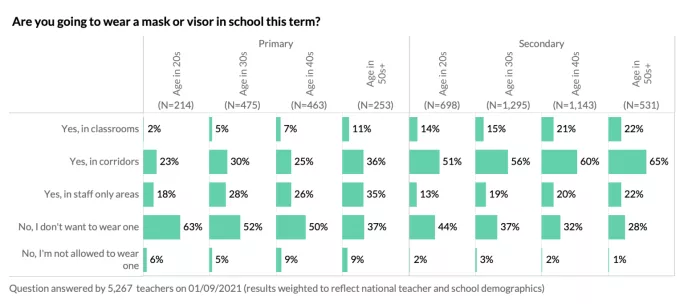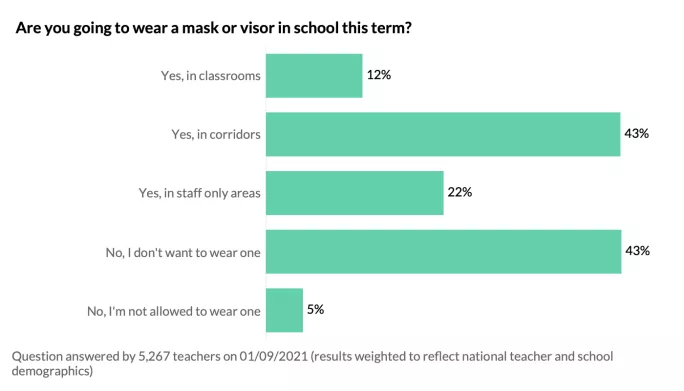A majority of secondary teachers say they will continue to wear face masks or visors in school corridors this term, according to a new survey.
But the measure is less popular with younger staff and primary teachers, new data published by the Teacher Tapp app suggests.
Asked if they were planning to continue using face coverings this term, most secondary teachers in all age groups said they wanted to keep wearing masks in school corridors.
Covid and schools: Heads and teachers less confident on new Covid rules
Safety measures: Schools ‘could keep masks and social distancing’
Need to know: What Covid unlocking means for schools
However, the proportion who said they would do this fell with age - with 65 per cent of secondary teachers aged 50 or above planning to wear face coverings in corridors, dropping to 60 per cent in their 40s, 56 per cent in their 30s, and 51 per cent in their 20s.
And a majority of primary teachers in their 20s and 30s said they didn’t want to wear masks in school at all.
Covid: Teachers’ concerns about safety measures in schools
Meanwhile, half of primary teachers in their 40s said they weren’t in favour of wearing a mask around school, compared with 37 per cent in their 50s or above.
Overall, 12 per cent of teachers across both primary and secondary schools said they were planning to continue wearing masks in classrooms, while 43 per cent said they would keep using them in corridors, and 22 per cent said they would wear face coverings in staff-only areas.
More than two in five (43 per cent) said they didn’t want to wear a mask in school, while 5 per cent said they would not be wearing one because they were not allowed to.
A Department for Education spokesperson said: “The measures in place in schools for the autumn term strike a balance between making schools safe - with enhanced ventilation, Covid testing and vaccinations of older students and staff - and reducing disruption by removing bubbles and face coverings.
“Our guidance is clear that schools should only introduce additional measures if advised by local directors of public health in response to high case rates within the school. Such measures should be temporary and carefully balance public health concerns with the need to prioritise face-to-face education.”






